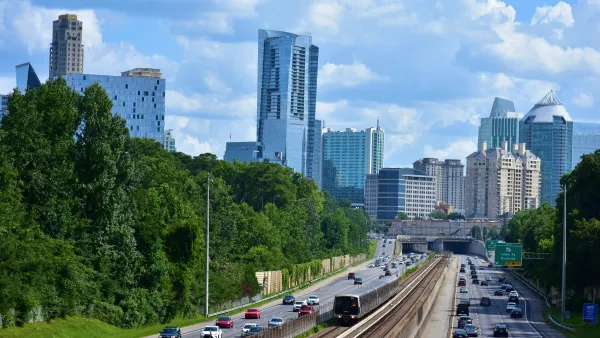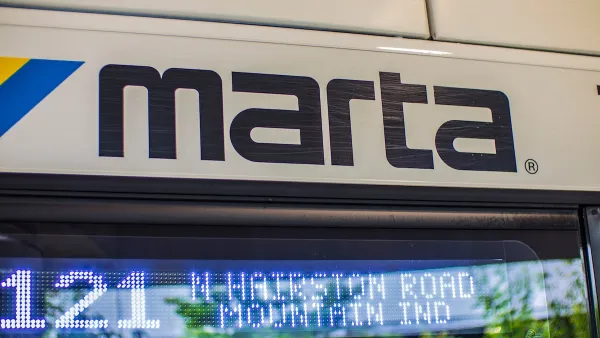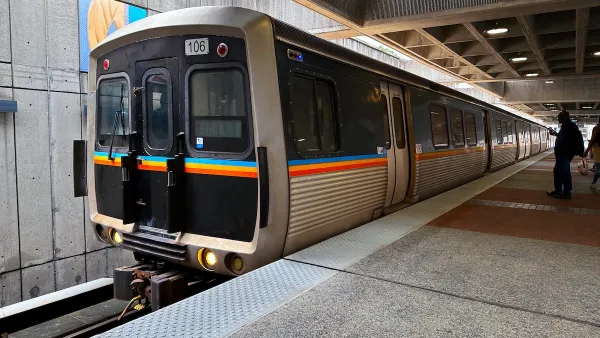Maggie Comstock looks at what it takes to be considered a "Smart City", and asks what an organizationally and infrastructurally challenged city like Atlanta can do to raise its IQ.
For Comstock, the established definitions of a smart city, based on technologically advanced or socially inclusive characteristics are inadequate. Her broader definition sounds somewhat like smart growth, and a lot like sustainable development: "At its most basic level, a city is comprised of a government (in some form), people, industry, infrastructure, education and social services. A smart city thoughtfully and sustainably pursues development with all of these components in mind with the additional foresight of the future needs of the city."
By these metrics, Comstock evaluates whether established, sprawling cities such as Atlanta can "boost its IQ." She turns to two initiatives that she argues are paving the way for "smarter and more sustainable habits."
"As for Atlanta, the USGBC Atlanta Branch of the Georgia Chapter has done a stellar job on this front, including facilitating the passage of a LEED green building policy for public sector buildings. The City of Atlanta has since signed up to be one of the three pilot cities for the President's Better Buildings Challenge, which charges cities to make commercial buildings 20% more energy efficient by 2020 and to accelerate private sector investment in energy efficiency."
While these measures are certainly smart, they seem to stretch the established "smart city" definitions to the breaking point.
Perhaps it's just time to choose some new buzzwords.
FULL STORY: What is a Smart City and How Can a City Boost Its IQ?

National Parks Layoffs Will Cause Communities to Lose Billions
Thousands of essential park workers were laid off this week, just before the busy spring break season.

Retro-silient?: America’s First “Eco-burb,” The Woodlands Turns 50
A master-planned community north of Houston offers lessons on green infrastructure and resilient design, but falls short of its founder’s lofty affordability and walkability goals.

Delivering for America Plan Will Downgrade Mail Service in at Least 49.5 Percent of Zip Codes
Republican and Democrat lawmakers criticize the plan for its disproportionate negative impact on rural communities.

Test News Post 1
This is a summary

Test News Headline 46
Test for the image on the front page.

Balancing Bombs and Butterflies: How the National Guard Protects a Rare Species
The National Guard at Fort Indiantown Gap uses GIS technology and land management strategies to balance military training with conservation efforts, ensuring the survival of the rare eastern regal fritillary butterfly.
Urban Design for Planners 1: Software Tools
This six-course series explores essential urban design concepts using open source software and equips planners with the tools they need to participate fully in the urban design process.
Planning for Universal Design
Learn the tools for implementing Universal Design in planning regulations.
EMC Planning Group, Inc.
Planetizen
Planetizen
Mpact (formerly Rail~Volution)
Great Falls Development Authority, Inc.
HUDs Office of Policy Development and Research
NYU Wagner Graduate School of Public Service





























